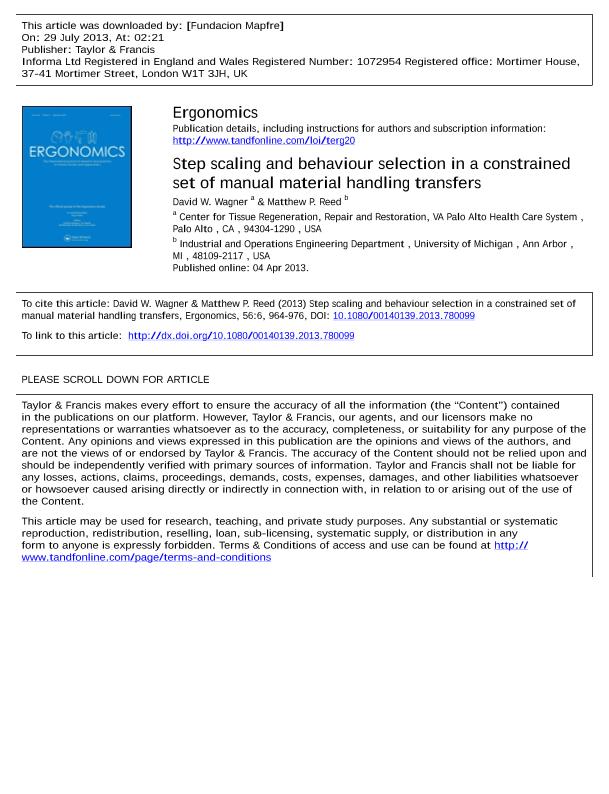Step scaling and behaviour selection in a constrained set of manual material handling transfers

Contenido multimedia no disponible por derechos de autor o por acceso restringido. Contacte con la institución para más información.
| Tag | 1 | 2 | Valor |
|---|---|---|---|
| LDR | 00000cab a2200000 4500 | ||
| 001 | MAP20130023540 | ||
| 003 | MAP | ||
| 005 | 20130829112738.0 | ||
| 008 | 130729e20130603esp|||p |0|||b|spa d | ||
| 040 | $aMAP$bspa$dMAP | ||
| 084 | $a875 | ||
| 100 | $0MAPA20100062692$aWagner, David W. | ||
| 245 | 1 | 0 | $aStep scaling and behaviour selection in a constrained set of manual material handling transfers$cDavid W. Wagner, Matthew P. Reed |
| 520 | $aPredictive biomechanical analysis of manual material handling (MMH) transfers is dependent on accurate prediction of foot locations relative to the task. Previous studies have classified common acyclic stepping patterns used during those transfer tasks, but the influence of walking distance prior to the transfer is not well understood. Twenty men and women performed transfers for a minimum of six different delivery distance conditions. The number of steps used by the participants ranged from two to seven. A theoretical framework for idealised step-scaling strategies is proposed and compared with the experimental data. The maximum observed increase in step length prior to delivery was 1.43 times the nominal step length calculated for each participant. The data suggest that although participants can scale their steps to facilitate the use of a single terminal stance at the transfer, the majority of participants chose to utilise a combination of stepping strategies if the preferred contralateral lead foot strategy could not be easily implemented. | ||
| 773 | 0 | $wMAP20100019818$tErgonomics : the international journal of research and practice in human factors and ergonomics$dOxon [United Kingdom] : Taylor & Francis, 2010-$x0014-0139$g03/06/2013 Volumen 56 Número 6 - junio 2013 , p. 964-976 |

